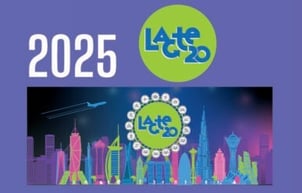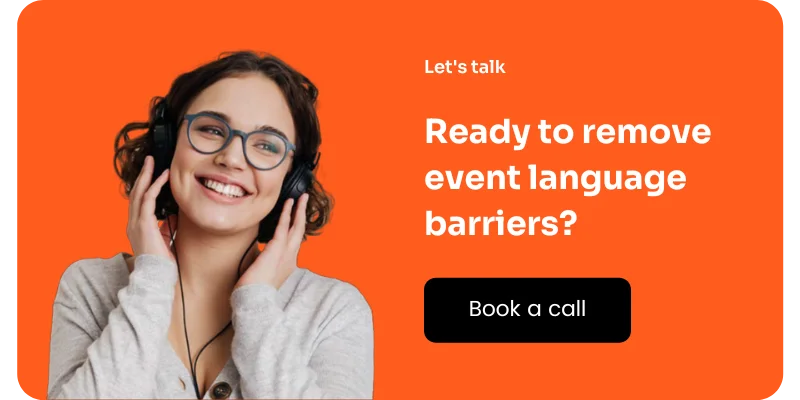Most events are, at their core, about connecting people with a shared, valuable experience. From roaring fans at a sold-out stadium to an intimate poetry reading, to an industry-shaping business conference — all attendees are sharing in an experience that’s meaningful for them.
As technology develops, it gives us new ways to create, shape and access these shared experiences. After all, technology has been an integral part of events from the very beginning. Microphones amplified speakers and performers; video broadcasts allowed people around the world to watch events; the internet took accessibility even further and allowed for new degrees of communication and interactivity from attendees.
The "metaverse” is the next technological advancement making waves in the events sphere.
What is the Metaverse?
The term fundamentally refers to digital environments within which multiple people can see and interact with each other, as customisable avatars. While the idea and various executions of the metaverse have been around for decades, Facebook’s rebranding as “Meta” has vaulted the topic to the forefront of technological discourse. In Zuckerberg’s words, the metaverse is “the beginning of the next chapter of the internet.” He not only foresees a world where you can plug into a virtual world to see, do, and experience anything your heart desires, but also a world where you don a VR headset to go to work, do some shopping, and (presumably) stand in line at the post office.
Recommended customer story
Axians: Using AI captions to raise the engagement in a 3D virtual event
What does the metaverse mean for events?
In the context of events, the metaverse means attendees entering a digital event space as their personalised avatar and having the freedom to move around, interact with other attendees, and ultimately curate their own, unique event experience. This is in contrast to today’s standard virtual events, where everyone sees the same video feed on their screen.
One of the best cases for the widespread adoption of this kind of event experience is that modern audiences are already familiar and comfortable with digital ecosystems. Social media, for example, has normalised the practice of creating a digital representation of ourselves and interacting with others in a virtual forum.
While we can agree that the metaverse is likely to impact the event industry, what that impact will look like is another thing altogether. From our vantage point, we see two primary ways events will be changed: offering attendees a more immersive experience and making attendees a visible part of the event.
Let’s examine these points in a bit more detail.
Taking event experiences to the next level
The first way the metaverse changes the event industry is through improved quality and immersion of event experiences. In an event held in the metaverse, attendees are able to access a fully immersive event experience, where they have the freedom to engage with features and activities at their leisure. This is especially applicable to large events with multiple speakers or attractions that are available simultaneously, such as a trade fair or large conference. Attendees can virtually walk around at their own pace, giving attention to elements that interest them.
In theory, the metaverse gives event planners the opportunity to give attendees the best of both worlds from physical and virtual events. For example, a primary benefit of physical events is that attendees can move around at their own pace and feel immersed in the energy and excitement of the event. They can also see more of the event speaker than just their face, which is typical of virtual events and meetings held over Zoom. Events in the metaverse will offer these features and more, reaching new levels of “in-person” engagement. A key benefit of virtual events that event planners can benefit from is accessibility. Without geographical limitations, their events can be open to attendees around the world, who can “plug-in” simultaneously to share in the immersive experience.
Metaverse technology will also have an impact on the experience of hybrid events, or events that are designed to be accessed both in-person and digitally. For such events, the metaverse offers a new dimension that can be offered in tandem with a 2D or physical presentation. A recent webinar that Interprefy held in partnership with MootUp is a great example of this. During the event, attendees could virtually walk around the venue and stage, as well as interact and network with other participants. They could have individual chats, greet, hug, and even high-five each other.
On-demand webinar
How Can the Metaverse Support Inclusivity Through Language?
Watch now →
The audience is a visible part of the event
Another key way that the metaverse is changing the event industry lies in not with the event runners, but the attendees themselves. More specifically, the metaverse makes audiences visible to speakers and performers. This is beneficial for speakers and event planners, as well as the attendees themselves.
In today’s standard virtual events, speakers see a list of attendee names or a mosaic of video feeds, if anything at all. With an event in the metaverse, however, speakers can get a sense of speaking to an actual crowd, rather than the column or mosaic of faces common to most conferencing software. Seeing individuals in the audience also fosters a sense of community around the event and encourages active participation, which is often lacking in virtual events.
This is especially true for virtual events designed to encourage networking and communication between all participants, such as breakout rooms and networking sessions. Having a 3D breakout room to virtually walk around and chat with others is far more likely to attract participation and boost engagement. This collectively leads to a better event experience for all stakeholders.
Tips for event success in the metaverse
Given how the metaverse stands to impact the events industry, businesses must ensure their events make the best use of the technology. Hosting a poorly planned or executed metaverse event can damage your brand and communicate to attendees that you’re more interested in jumping on the metaverse bandwagon than actually using the technology to create genuine value.
So what can you do to host successful events in the metaverse? Here are some tips:
- Don’t alienate attendees who either don’t have the technology to participate in a VR event or don’t know how to. This means catering to a range of capabilities, with customisable settings available for bandwidth usage, video quality, and other non-essential event features.
- Give attendees a choice between levels of immersion. Not everyone wants to be blown away by a fully immersive experience sensory overload, so giving attendees an option to scale down the immersion will ensure more people are happy with their experience. On the other end of the spectrum, make sure to include those who don’t want any immersion at all - with a functional and coherent 2D or in-person experience, if applicable.
- Offer content in a variety of languages. Much like traditional virtual and hybrid events, events in the metaverse benefit greatly from a diverse, multilingual audience. Thankfully, offering multiple high-quality language options can be simple. Interprefy offers multilingual solutions that cater to the specific needs of virtual, hybrid, and VR events.
Interprefy is an all-in-one platform for language interpretation from professional conference interpreters and automatic live captioning in multiple languages. We integrate with over 70 online meeting platforms, including metaverse platforms like MootUp, 3DVR, vBuzz.
If you’re interested in learning more about how our platform can take your events to the next level, whether in the metaverse or the real world, we’d love to chat. Click below to contact a member of the team or request a free quote.





 More download links
More download links



